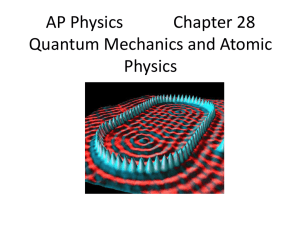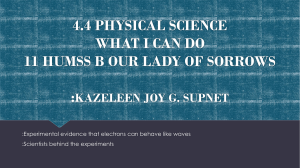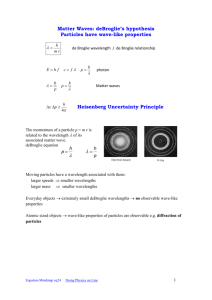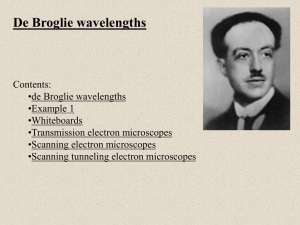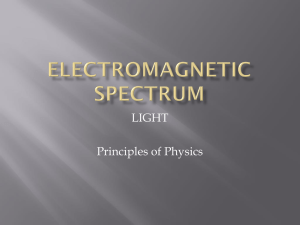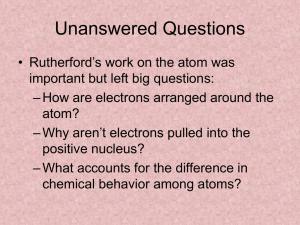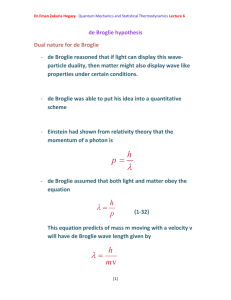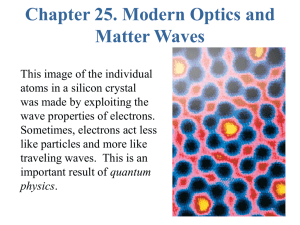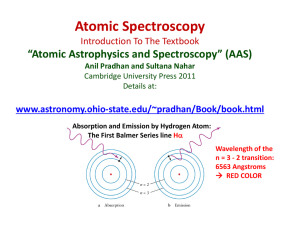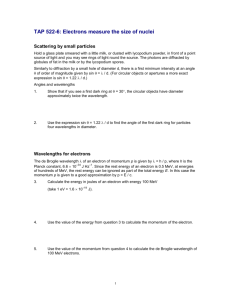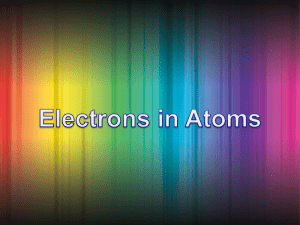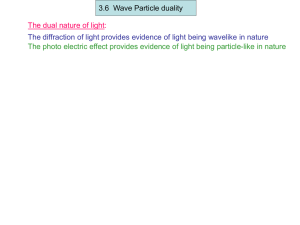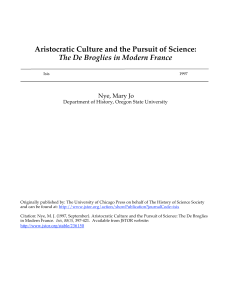The Wave Nature of Matter
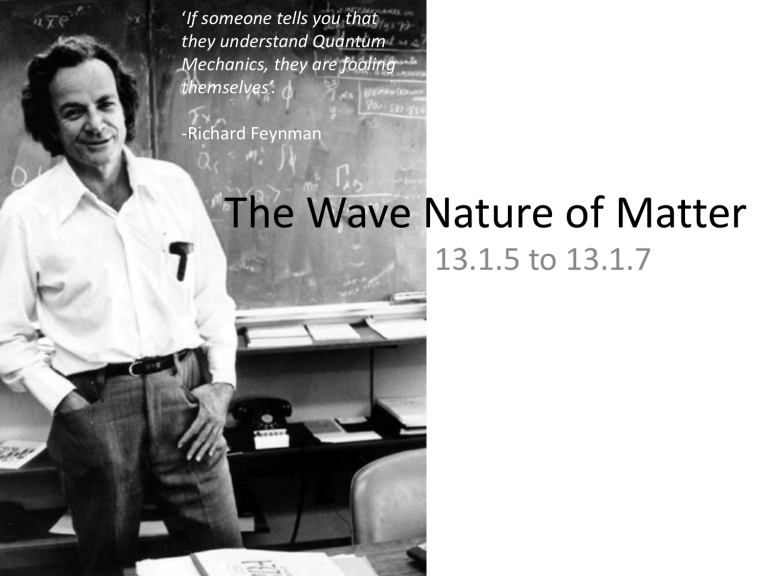
‘If someone tells you that they understand Quantum
Mechanics, they are fooling themselves’.
-Richard Feynman
The Wave Nature of Matter
13.1.5 to 13.1.7
The de Broglie
Hypothesis and Matter Waves
• In 1923 Louis de Broglie suggested that since nature should be symmetrical, that just as waves could exhibit particle properties, then what are considered to be particles should exhibit wave properties.
Derivation of the de Broglie
Wavelength
• Based on this result, the de Broglie hypothesis is that any particle will have an associated wavelength given by p = h /λ
• The waves to which the wavelength relates are called matter waves.
• For a person of 70 kg running with a speed of 5 m/s, the wavelength λ associated with the person is given by:
h p
h mv
6 .
63
10
34
( 70 )( 5 )
2
10
36 m
• This wavelength is minute to say the least. However, consider an electron moving with speed of 10 7 m/s, then its associated wavelength is:
h p
h mv
6 .
63
10
34
( 9 .
11
10
31
)( 10
7
)
7
10
11 m
Although small, this is measurable.
Experimental Verification of the de Broglie Hypothesis
• In 1927 Clinton Davisson and
Lester Germer who both worked at the Bell Laboratory in New Jersey, USA, were studying the scattering of electrons by a nickel crystal. A schematic diagram of their apparatus is shown.
• Their vacuum system broke down and the crystal oxidized. To remove the oxidization, Davisson and
Germer heated the crystal to a high temperature. On continuing the experiment they found that the intensity of the scattered electrons went through a series of maxima and minima the electrons were being diffracted. The heating of the nickel crystal had changed it into a single crystal and the electrons were now behaving just as scattered Xrays do.
• Effectively, that lattice ions of the crystal act as a diffraction grating whose slit width is equal to the spacing of the lattice ions.
• Davisson and Germer were able to calculate the de Broglie wavelength
λ of the electrons from the potential difference V through which they had been accelerated.
• They knew the spacing of the lattice ions from X-ray measurements and so were able to calculate the predicted diffraction angles for a wavelength equal to the de Broglie wavelength of the electrons. The predicted angles were in close agreement with the measured angles and the de Broglie hypothesis was verified – particles behave as waves.
The Math from the Davisson-Germer
Experiment
Examples:
1. Calculate the de Broglie wavelength of an electron after acceleration through a potential difference of 75 V.
2. Determine the ratio of the de Broglie wavelength of an electron to that of a proton accelerated through the same magnitude of potential difference.
Homework:
• Tsokos
– Page 395
• Questions 1 to 11
